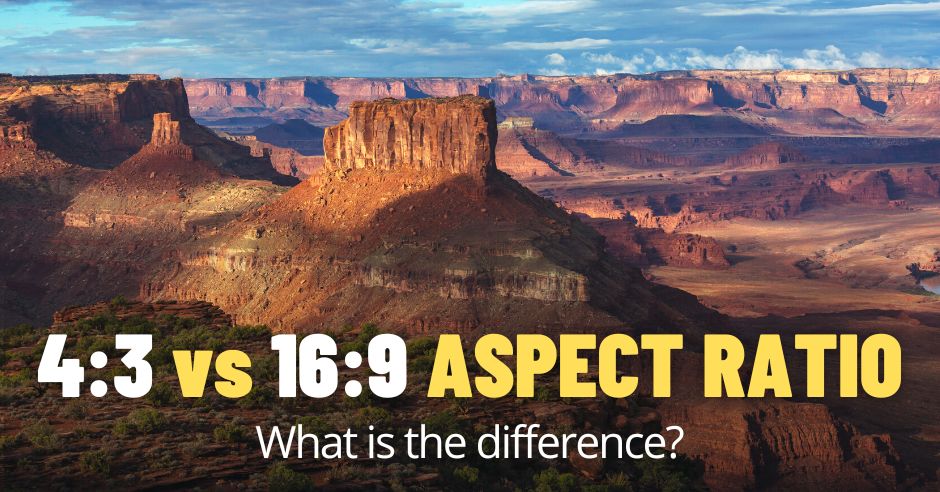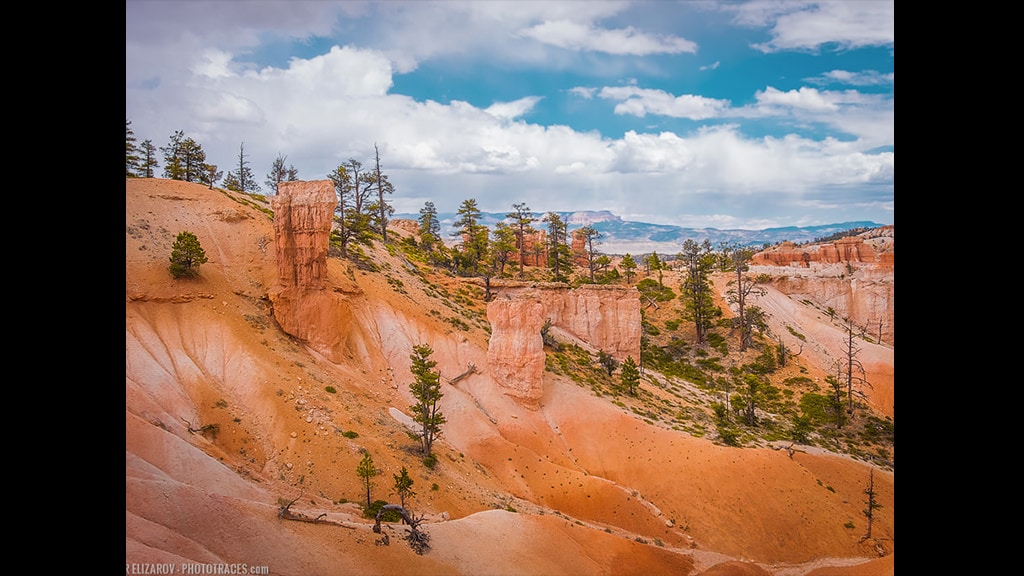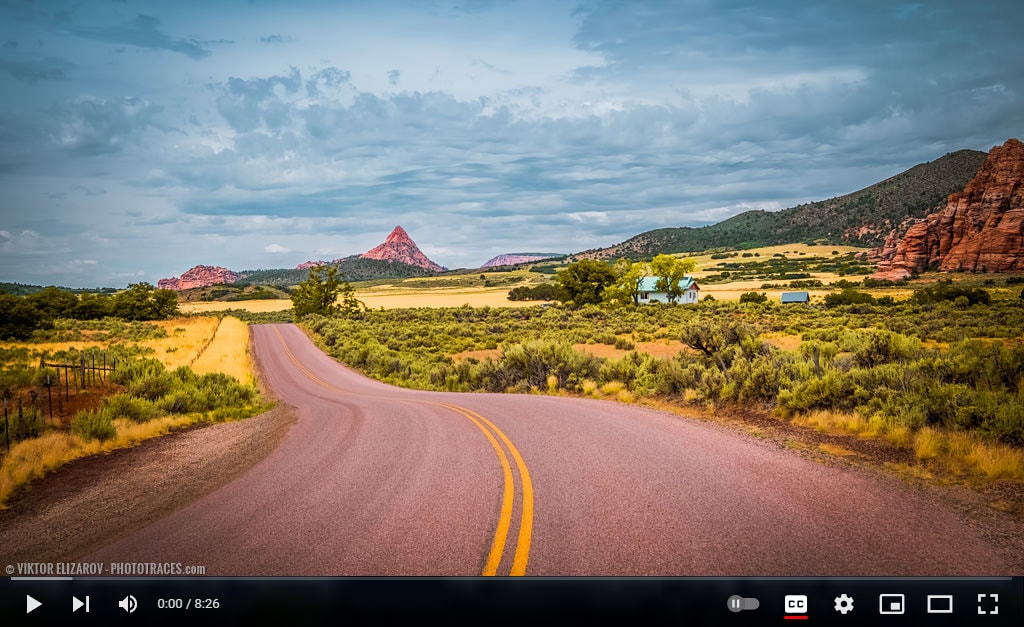If you’re a photographer or videographer, you probably asked yourself at least once which aspect ratio you should use: 4:3 vs 16:9.
Aspect ratios affect how your video or photo looks, which can impact your final result. That’s because you can use them for different purposes and mediums: some are better for still images and others for videos.

So let’s settle this 16:9 vs 4:3 aspect ratio debate once and for all!
What is an aspect ratio?
First of all, let’s start with the basics. The aspect ratio is the relationship between the width and height in a photograph or video. Essentially, it translates into how an image will look on a screen.
It’s made of two numbers: the width comes first and the height second. If the first number is bigger, you’ll end up with a horizontal image, whereas if the second number is bigger, you will have a vertical shot.
Common aspect ratios include 4:3, 16:9, and 1:1.
What’s The Difference Between 16:9 vs 4:3?
A 16:9 aspect ratio means there are sixteen units of width for every nine units of height. So the width-to-height ratio is 16 units to 9 units. A 4:3 aspect ratio means four units of width for every three units of height.

Let’s see what this means in percentages:
The 16:9 aspect ratio is 78% wider than it is tall. In comparison, the 4:3 aspect ratio is 33% wider than tall. Thus, the 16:9 aspect ratio can fit more information horizontally, while the 4:3 aspect ratio has more space vertically.

Because of these characteristics, they’re each used for different purposes. Typically, most videos have a 16:9 ratio, and the 4:3 ratio is best for photos!
What Happens When You Use the Wrong Aspect Ratio?
The problem comes when you use the wrong aspect ratio for your project. When this happens, you risk having to redo your entire video/photo because it won’t look right on your screen or other platforms.
First, you must ask yourself where you want to display your photo or video. This is important because you must create content that will fit the screen on which it will be projected.

Any content that’s not specifically designed for this format will be stretched or squished to fill the entire screen. That can lead to distorted images.
For example, if you want to display a photo or video with a 4:3 aspect ratio on a 16:9 screen, your image will have borders. On the other hand, if you want to display a 16:9 photo or video on a 4:3 screen, the image will be distorted or significantly cropped – in ways you wouldn’t want it to be.

If you want to display a 16:9 photo in a 4:3 layout, the image will be stretched – just think of what happens when you’re trying to print a photograph in a different aspect ratio.
The Origin of 4:3 Aspect Ratio
Remember when the TV in your home used to be square? Well, that’s because the screen’s aspect ratio was 4:3. This was the standard aspect ratio for television sets and computer monitors in the United States in the 40s.
If you’re finding it hard to imagine how that looks, think about silent films back in the day.
However, screens became wider as sound entered the equation.
The Origin of 16:9 Aspect Ratio
Movie theaters wanted to attract people to come to watch movies instead of watching them on their home screens. So they changed their ratio overall to make the experience of watching a film or movie more immersive and captivating. And it worked!
Slowly but surely, aspect ratios started to widen in time. And before you know it, the 16:9 ratio was used in most movies.
This aspect ratio is commonly known as widescreen, although it’s also called 1.77:1 or 1.78-1 aspect ratio. 16:9 is often used in modern televisions and computer monitors because it offers a broader viewport than 4:3; that means you can fit more content on your screen horizontally.
Read also: Repetition in Photography Composition
A wider aspect ratio will make it easier to see what’s happening in the scene – you can notice details even if many actors or actions are present at the same time!
What is the Best Aspect Ratio For Photography?
The 3:2 aspect ratio is considered the “golden ratio” because it’s also the native aspect ratio of the digital sensor in most APS-C and full-frame cameras. To have a better idea, it’s the same shape as a 35mm film camera.

3:2 is considered one of the best aspect ratios for photos! It is also the most used aspect ratio in photography because it allows photographers to capture every detail of their subject through their lens.
A 4:3 aspect ratio is also perfect for photos, as it’s ideal for print and social media display. It is also the native aspect ratio most Micro Four-Thirds cameras use.

You can also use a 1:1 aspect ratio (square) to make something more artistic/for creative purposes; this one is commonly used in polaroid cameras.
Whenever in doubt, you can assume that the best aspect ratio for your photos is the native aspect ratio of your camera. Most of the time, it will do you justice!
What is the Best Aspect Ratio For Videography
When the 16:9 aspect ratio came about, it was not impressive just because of its size but because it impacted how viewers experienced the film they saw on the screen.

The aspect ratio of most televisions is 16:9 because it has the ideal shape for watching movies. That’s because you see more information on your screen horizontally than watching one in a 4:3 ratio, where you can see more vertically.
Read also: 60 fps vs 30 fps
So you’re catching more of the action and plot.
Which Aspect Ratio Should You Use?
Although a minor detail, aspect ratios are powerful: they can make or break your image or video!
Aspect ratios are important because they affect how your image looks on your computer or phone screen and how much space your picture takes up when you print it out or share it online.
It’s all about what looks best in that format.
Using the wrong aspect ratio can make the picture on your screen stretched or compressed – When you watch 16:9 content on a 4:3 monitor or vice versa, your screen will appear distorted because it’s displaying content that doesn’t fit within its dimensions.
So what is the best aspect ratio? The answer depends on what you’re doing. If you’re shooting photos, then 3:2 or 4:3 would be your best bet. If you’re shooting video, 16×9 will allow you to see more of what’s happening in front of your camera.
So it’s essential to have a little knowledge of aspect ratios to ensure that you’re picking the right one!
Happy shooting!
